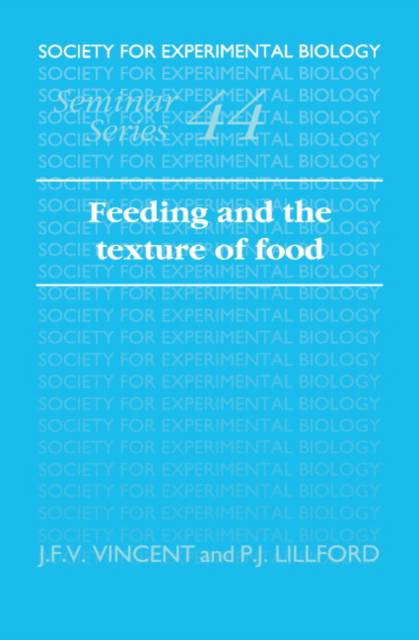
Je cadeautjes zeker op tijd in huis hebben voor de feestdagen? Kom langs in onze winkels en vind het perfecte geschenk!
- Afhalen na 1 uur in een winkel met voorraad
- Gratis thuislevering in België vanaf € 30
- Ruim aanbod met 7 miljoen producten
Je cadeautjes zeker op tijd in huis hebben voor de feestdagen? Kom langs in onze winkels en vind het perfecte geschenk!
- Afhalen na 1 uur in een winkel met voorraad
- Gratis thuislevering in België vanaf € 30
- Ruim aanbod met 7 miljoen producten
Zoeken
Feeding and the Texture of Food
€ 211,95
+ 423 punten
Omschrijving
A large part of the effort of the food industry is spent in attempting to understand the limitations of the type of food that animals can eat. An understanding of the factors that influence feeding behavior can then be used to produce foodstuffs that are more attractive to the animals in question, whether they be humans, cattle, dogs, or cats. This book examines both the texture of food and the adaptations of various animals (including fish, mammals, primates, and humans) to the type of food they commonly eat. Zoologists, material scientists, and food scientists are assembled to present for the first time an integrated overview of feeding by vertebrates. The mechanical properties of various foods are considered in conjunction with the mechanics of eating them and more subjective behavioral parameters such as acceptability and palatability. The book consequently will be of interest to food scientists, zoologists, and animal behavioralists.
Specificaties
Betrokkenen
- Uitgeverij:
Inhoud
- Aantal bladzijden:
- 264
- Taal:
- Engels
- Reeks:
- Reeksnummer:
- nr. 44
Eigenschappen
- Productcode (EAN):
- 9780521375214
- Verschijningsdatum:
- 24/10/1991
- Uitvoering:
- Hardcover
- Formaat:
- Genaaid
- Afmetingen:
- 163 mm x 235 mm
- Gewicht:
- 571 g

Alleen bij Standaard Boekhandel
+ 423 punten op je klantenkaart van Standaard Boekhandel
Beoordelingen
We publiceren alleen reviews die voldoen aan de voorwaarden voor reviews. Bekijk onze voorwaarden voor reviews.








